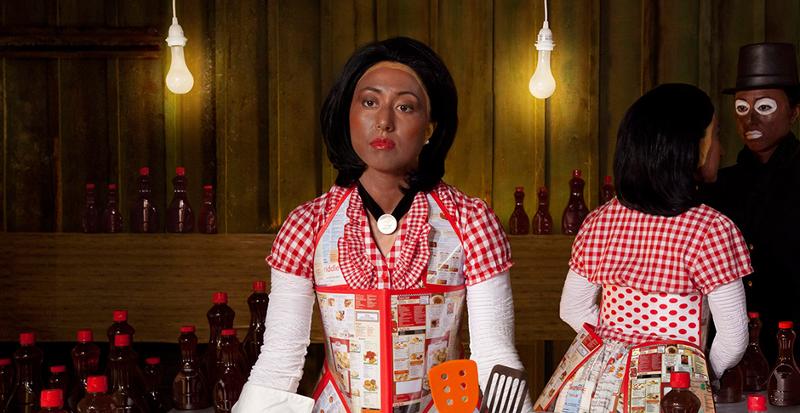
Food for art
Food is the universal connection among all species – we all need some form of it to live. But food and meals are also some of the most profoundly defining elements to society – what we eat, how we make it. Which is why it is also a common theme in art, and the subject of two shows around town.
The first is called “Modern Meals: Remaking American Foods from Farm to Kitchen” at the Wolfsonsian-FIU museum, which takes a look at the transformation of communities in the United States as our production and consumption of food profoundly changed in the 20th century. This is interesting stuff.
The rise of mass-food production, of refrigeration, of supermarkets, of fast food has made the way we tuck into our meals almost unrecognizable from 100 years ago. For the most part, we no longer pick our vegetables and fruit, hunt our meat, and prepare it all in a kitchen on a daily basis. What may have been a similar meal day after day is also a thing of the past. We can eat foods from all parts of the globe, as they can be preserved and shipped in a very short time; we can have a fast-food hamburger one meal and a frozen pizza the next.
All of this means the places we eat have also transformed. Take for instance the kitchen: the refrigerator and freezer, the dishwasher, the electric stove did not exist a few generations ago. The industrialization of the production of food and the efficiency that it all afforded made our consumption a true product of the Modern era. Oh, except that, just like our ancestors, one things remains a constant: we all need to eat.
At the Girls’ Club in Ft. Lauderdale (a Knight Arts grantee), an exhibit called “Disorientalism: Ready Mix” focuses on the role of women in relationship with food – also something universally common among species and since time began – but in an ultra-contemporary context. Two Asian-American artists, Katherine Behar and Marianne Kim, look into the industrialization of food production, and tie it to our massive consumerist culture, whose ultimate end might be junk food. Women have played a key part in the whole process: they have provided much of the labor throughout the centuries, from the fields to the factory, and their faces have helped sell numerous products. Mass-production might make us more crass, but women were also freed up from the kitchen when meals become so much easier – it’s a complicated history.
This is a “chapter” in a series at the Club titled “The Food Groups,” a five-part series highlighting race, gender and labor in the production of food.
“Disorientalism: Ready Mix,” with a reception and walk-through with the artists on May 30 at 7 p.m., is on view (free) at the Girls’ Club, 117 N.E. 2nd St., Ft. Lauderdale; girlsclubcollection.org. “Modern Meals: Remaking American Foods from Farm to Kitchen” runs through Sept. 29 at the Wolfsonian-FIU, 1001 Washington Ave., Miami Beach; www.wolfsonian.org.
Recent Content
-
Artsarticle ·
-
Artsarticle ·
-
Artsarticle ·

